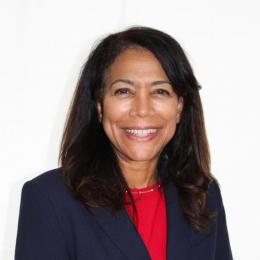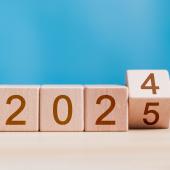NStafeeva / Shutterstock.com
Let’s be frank – out of all aspects of diversity and inclusion preoccupying our minds, generational or age diversity is likely last on the priority list. That is, if it is even on the list. Indeed, in the world of diversity, equity, and inclusion (DEI), we frequently overlook age-related biases. Yet, age-based diversity is critical to the prosperity of organizations and can create a strong competitive advantage for companies that intentionally embrace it.
... Age-based diversity is critical to the prosperity of organizations and can create a strong competitive advantage for companies that intentionally embrace it.
What is generational diversity?
Generational diversity is when multiple generations are represented in the workplace. You may be working alongside colleagues from several different generations, such as:
| US Term for Age Group (See links for generally preferred working styles for each) | Generally Accepted Birth Years |
| Traditionalists | 1928 – 1945 |
| Baby Boomers | 1946 – 1964 |
| Generation X | 1965 – 1980 |
| Generation Y or Millennials | 1981 – 1996 |
| Generation Z | 1997 – 2012 |
Age diversity in current workplaces is greater than ever as more people choose to work longer due to preferences or necessity. Each generation features distinctive characteristics, values, needs, communication preferences, and working styles, as well as, of course, similarities to each other.
Age biases in the time of great resignation
The global Great Resignation was borne out of COVID pandemic shutdowns and the subsequent reevaluation of values and purpose in life. In just April 2022 itself, more than 4.4 million Americans quit their jobs, according to the US Bureau of Labor Statistics.
... Workers ages 18 to 29 resigned
more than any other age group,
Interestingly, workers ages 18 to 29 resigned more than any other age group, according to Zippia, with 37 percent quitting their jobs in 2021. During the same period, resignations were 17 percent for workers aged 30 to 49, 9 percent for ages 50 to 64, and 5 percent for ages 65 and older.

Although the Great Resignation created unprecedented talent shortages and a candidates’ market, with employers complaining they are fighting desperately to attract new employees, older workers continue to say it’s difficult to find a job.
Although the Great Resignation created unprecedented talent shortages and a candidates’ market, with employers complaining they are fighting desperately to attract new employees,
older workers continue to say it’s difficult to find a job.
Professionals ages 45 and up view their age as a significant obstacle in their job search, according to a report by Generation, a non-profit career training organization. Generation’s findings confirm such beliefs are justified. Hiring managers, they found, strongly disfavor candidates older than 45, finding them lacking relevant experience and education and to not be the best fit for the company culture (“best fit” viewed as demonstrating a persona that suits the dynamics of the team, workplace culture, and the industry overall). They also think candidates ages 45 and older are reluctant to try new technologies and unable to acquire new skills.
Yet, the same report shows that despite this lack of confidence in older candidates at the hiring stages, managers who ended up hiring candidates older than 45 rated 87 percent of those hires as performing as well or better than younger employees and anticipated them to stay with the company long term.
... Managers who ended up hiring candidates older than 45 rated 87 percent of those hires as performing as well or better than younger employees and anticipated them to stay with the company long term.
Older workers tend to offer employers more experience, critical thinking, soft and problem-solving skills, a strong work ethic, provide customers with consistency and personal attention, can be instrumental in training and mentoring the next generation of workers, tend to stay with employers longer than younger workers, demonstrate fewer workplace behavior issues, and take fewer days off, according to 10 Advantages of Older Workers, Columbia Public Health.
Almost 13,000 age discrimination claims were filed with the Equal Employment Opportunity Commission in fiscal year 2021 alleging violations of the Age Discrimination in Employment Act that prohibits discrimination against workers ages 40 and above. Nearly two out of three workers aged 45 and older have reported seeing or experiencing age discrimination on the job, according to an AARP survey.
Older workers are more engaged than younger ones
Yet, employees ages 50 and older have been found to be the most engaged of any age group, AARP has documented, so attracting them to the workforce can increase productivity. The global Organization for Economic Cooperation and Development says that employers with a 10 percent higher share of older workers than the average see a 1.1 percent increase in productivity.
Debunking the myths
As companies race to create teams that are agile and tech-savvy, older workers often get overlooked. But why? Given ample research showing that older employees bring significant value to the organizations, why are they not a focus of recruiting efforts? Even worse, why do they frequently end up on the bottom of the hiring pools? The answer lies within each of us, and it’s a four-letter word — bias. We all have biases in one way or another, including age-based biases.
... Why do they frequently end up on the bottom of the hiring pools? The answer lies within each of us, and it’s a four-letter word — bias.
Let’s debunk some common myths about hiring older workers. These myths perpetuate biases that older candidates face when applying for jobs.
Myth #1: Older workers lack technological skills and the desire to acquire them.
Unlike Generation Z, reputed to be digital natives (practically born with an electronic device in their hands!) or Millennials, who were early technology adopters, older workers – who started their careers long before the internet came into existence – are believed to be intimidated by and resistant against technology. However, the AARP survey found that individuals ages 50 and older have been steadily increasing their use of technology. Whether it’s smart TVs, eBooks, or v assistants, Americans ages 50 to 64 rely on technology as much as the overall population.

Studies also show that older workers are open to learning new skills, including technology skills required by employers. Most older workers are interested in additional job/skills training, according to AARP research.
Most older workers are interested in
additional job/skills training ... .
Despite not having grown up with electronics, older workers have been embracing technology and are open to upskilling as needed for a job.
Myth #2: Older workers would not want to report to younger managers.
With the rise of Generation X and Millennial management, many older workers are reporting to managers who are younger than they are. In their book, Managing the Older Worker, Peter Cappelli and Bill Novelli suggest that some younger managers may be uncomfortable supervising employees with greater experience than they have. Indeed, discomfort likely flows both ways for any new situation – it may be difficult at first for an older subordinate to accept directions from someone much younger and for a younger manager to supervise someone who may be older than their parents, but the relationship offers opportunities they end up appreciating.
... They often find the expertise of the older worker very valuable and not coming across as bossy.
While older workers need to be open to using modern working styles and tools, even if some of the old ways were effective — they often are that way naturally without any prodding. Sometimes they may benefit from a little coaching but often they’ll absorb the tips readily. And younger managers need to feel empowered to manage the worker who may be older than their parents, and not to overreact to their ideas which might feel like control, not ignore them as not being on point with the times, and be open to their input which might offer solutions. And, in the end, they often find the expertise of the older worker very valuable and not coming across as bossy.
Friendships are often built between the oldest and youngest workers in an organization whether supervisor-staff
or within staff.
Friendships are often built between the oldest and youngest workers in an organization whether supervisor-staff or within staff.
Encouraging mutual respect and positive relations between the older employee and younger manager, and modeling leadership frameworks that challenge ageist assumptions will actively challenge the age-based biases, eliminate potential resentment, and elevate comfort level from both sides.
Myth #3: Older workers are too close to retirement and will not stay long.
With life expectancy previously more than doubling in the United States over the last century, the notion of retiring around age 65 is no longer the norm. Many Americans are choosing to continue working well past traditional retirement age for various reasons: financial need, enjoyment of work, wanting to stay intellectually engaged and to accomplish more through work, or for the social interactions a workplace can provide. They continue wanting to grow and contribute in meaningful ways, often motivated by wanting to bolster their legacy.
Inclusive and unbiased hiring practices
To capitalize on the many benefits that older workers bring to organizations and to facilitate the infrastructure of age-diverse teams, employers should seek to eradicate ageist hiring practices and biased organizational mindset. Here are some ways that can be accomplished:
- Review your organization’s recruiting materials on the website and in job postings. Do you use language that only appeals to younger candidates and may intimidate older ones? Are the images you use only featuring young people, or perhaps with only one token older person in the photo? Change, if needed, so your recruiting messages and images are inclusive of all ages and life stages.
- Reassess how and where you recruit. Do you dedicate most of your resources to recruiting on websites frequented by younger candidates or recruit only on college campuses? Determine ways you can expand your reach by researching where older candidates tend to search for job opportunities from online to places they frequent.
- Take a fresh look at your DEI materials to see if they contain any information on generational diversity. If they don’t, work with your DEI team to explore ways your organization can start focusing on this often-overlooked aspect of diversity. Candidates often check out potential employers’ published DEI information, so this can serve as an additional inclusive recruiting tool.
- Assemble age-diverse interview panels. Panelists of different ages can provide varying perspectives and create a more welcoming interview environment for an older candidate.

- Train your recruiters and hiring teams to be mindful of what they say to older candidates. Comments like that something happened “back in the day,” or is “old school” or “old fashioned,” can cause older candidates to feel alienated and should be avoided. And questions about their graduation year or proximity to retirement are a complete no-go as being not only inappropriate but also potentially considered unlawful age discrimination.
- Determine whether you offer the benefits that typically appeal to older employees — comprehensive health care savings benefits, robust training and educational programs, and flexible work arrangements (including opportunity to work part-time or remote work for “snowbirds” during winter months — benefits employees of many ages are also wanting now).
Determine whether you offer the benefits that typically appeal to older employees — comprehensive health care savings benefits, robust training and educational programs, and flexible work arrangements (including opportunity to work part-time or remote work for “snowbirds” during winter months — benefits employees of many ages are also wanting now).
- Educate hiring managers about age-related unconscious biases. Make it clear that there is a fine line between age biases and unlawful age discrimination and harassment. To help stamp out biases, facilitate mentorship and reverse mentorship opportunities for younger managers with older employees. Having positive relationships and mutual respect with people from different generations will likely lead to inclusive leadership and eradication of age-related biases.
- Invite older employees to virtual and in-person recruiting events. Representation matters. Excluding older workers from customer- or candidate-facing events perpetuates the negative stereotype that they do not belong or are not welcomed in your workplace.
- Have discussions with your middle and top-level leadership about the benefits of age-diverse teams and generational diversity. Emphasize the ways their teams can benefit from the expertise and skills older workers bring to the table and openly address any concerns they may have about an aging workforce. If possible, look for opportunities to showcase multi-generational team successes.
Having positive relationships and mutual respect with people from different generations will likely lead to inclusive leadership and eradication of age-related biases.
Generational diversity in the workplace is key to business growth and success, say 83 percent of global business executives, according to AARP. Yet, employers continue to overlook the benefits that the presence of multiple generations offers in the workplace and do not dedicate necessary resources to help ensure their recruiting processes are free from age-related biases. Only 6 percent of global executives have been intentional in this space by implementing unbiased recruiting processes.
Leverage untapped talent
This is your opportunity. Companies that tap into the older worker candidate pool will position themselves to gain competitive advantage, especially as the fight for talent intensifies. Creating hiring practices that are inclusive of all generations and working to eliminate age-related biases will benefit employers, and society as whole, exponentially. Who knows? Perhaps the Great Resignation could be transformed into the Great Invigoration, at least for those companies willing to leverage this currently untapped wealth of talent.
Disclaimer: The information in any resource in this website should not be construed as legal advice or as a legal opinion on specific facts, and should not be considered representing the views of its authors, its sponsors, and/or ACC. These resources are not intended as a definitive statement on the subject addressed. Rather, they are intended to serve as a tool providing practical guidance and references for the busy in-house practitioner and other readers.








